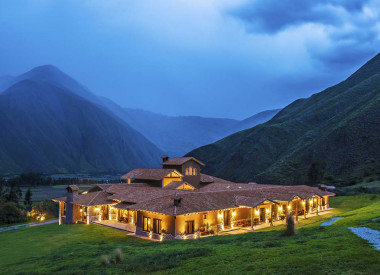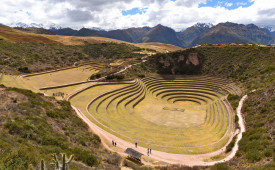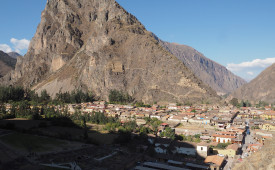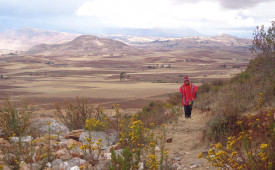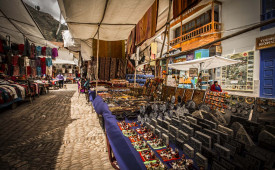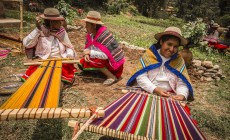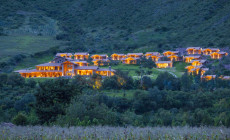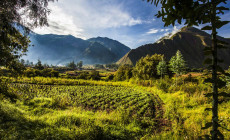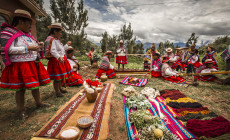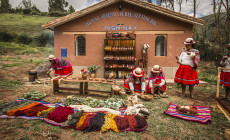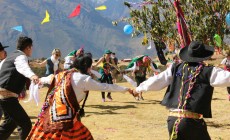-
Latin America
Latin America
- Countries (hidden space)
- Galapagos & Ecuador
- Guatemala
- Mexico
- Panama
- Peru
- Popular Attractions
- Machu Picchu
- Inca Trail
- Easter Island
- Galapagos Islands
- Patagonia
- Rio de Janeiro
- Iguazu Falls
-
Africa
Africa
- Spacer Africa
- South Africa
- Zimbabwe
- Popular Attractions
- Cape Town
- Okavango Delta
- Sossusvlei Dunes
- Victoria Falls
- The Kruger
- The Garden Route
- Masai Mara
-
Asia & Middle East
Asia & Middle East
- Asia
- Borneo (Malaysia)
- Cambodia
- India
- Japan
- Middle East
- Jordan
- Spacer Asia
- Laos
- Sri Lanka
- Uzbekistan
- Vietnam
- Popular Attractions
- Taj Mahal
- Lion Rock (Sigiriya)
- Angkor Wat
- Ha Long Bay
- Kyoto
- Petra
-
Destinations
- Latin America
- Argentina
- Bolivia
- Brazil
- Chile
- Colombia
- Costa Rica
- Galapagos & Ecuador
- Guatemala
- Mexico
- Panama
- Peru
- Asia
- Borneo (Malaysia)
- Cambodia
- India
- Japan
- Laos
- Sri Lanka
- Uzbekistan
- Vietnam
- Middle East
- Jordan
- Southern & East Africa
- Botswana
- Kenya
- Namibia
- South Africa
- Zimbabwe
- Contact Us
-
About
About
Llama Travel provides high quality holidays at the lowest possible prices.
99% recommend us Lower prices - guaranteed Financially protected by ATOL
The term Sacred Valley of the Incas is used to refer to the valley of the Urubamba River, especially between Pisac and Ollantaytambo. The valley was very important to the Incas, as many of their sacred sites were located close to the river. As well as its rich Inca history, it boasts an indigenous local culture, striking scenery and relaxing ambience. Find out what makes this region of Peru so special by reading our blog.
Sacred Valley Location
The Sacred Valley is located in the Peruvian Andes, about 15 kilometres north of Cusco, as the condor flies. It stretches across 60 kilometres of fertile land from Pisac to Ollantaytambo, with several small towns dotted throughout the valley. To get to the Sacred Valley, the drive from Cusco to Chinchero, a small village located high up on the Andean plains, takes about an hour.
Visit the Sacred Valley
The Sacred Valley is quieter and more peaceful than Cusco, and visitors to the area often choose to spend some nights in the valley to be closer to the nearby attractions. The valley itself is scenic, with green pastures surrounded by a snowy, mountainous backdrop.
If you opt for our Sacred Valley excursion, spend the day exploring the valley, visiting villages and archaeological sites, learning about its inhabitants and the fascinating history, and enjoying the striking scenery. You can also stay overnight in a beautiful hotel in the Sacred Valley where you get to spend time with the Misminay community and learn about their culture and traditions, with more time to relax. If you can’t decide between visiting for one or two days, read this blog.
Sacred Valley Sites
The Sacred Valley contains some of the most visited archaeological sites in the Cusco area. The whole of the Urubamba River was very important to the Incas, and many of their most sacred sites were located near the river, including Pisac, Ollantaytambo and Machu Picchu. Nowadays, as in Inca times, the Sacred Valley is an important agricultural area, and most of the towns have given themselves titles such as ‘the world capital of maize', or ‘the world capital of capulí'. Its pleasant climate makes it particularly suited to agriculture.
Chinchero is a small town known for its textile workshops producing colourful Andean garments, colonial church and Inca ruins. Due to its location above the Sacred Valley, wonderful views can be seen from the town.
The modern town of Ollantaytambo is built on the base of the old Inca town, and the streets and blocks of the town are the same as those of the original Inca settlement. It almost certainly contains the best examples of Inca buildings still in use, although they have been modified somewhat. The Inca ruins of Ollantaytambo have some very fine terracing and some exceptional stonework. The site is not completely finished, so it gives a fascinating insight into how the Incas constructed their sites.
Also in the Sacred Valley are the ancient salt evaporation terraces of Maras, where salty water from an underground stream runs through an extensive system of channels and salt is collected in small pools, which are tended to by members of the local community.
Nearby, the agricultural experimentation centre of Moray is one of the most impressive and unusual Inca ruins in the valley, consisting of many levels of terraces in concentric circles at different elevations. Due to the position of Moray, the temperature of the terraces can vary significantly, creating varied climatic conditions in a very small area. The Incas took advantage of this to experiment with different crop strains at differing altitudes. The site is beautiful and views of the terraces with the snow-capped Salkantay Mountain in the background are wonderful.
Follow the links below for more information on the Sacred Valley sites.
You can visit the Sacred Valley of the Incas on all of our Peru holidays – call us on 020 7263 3000 to speak to a Peru expert.

